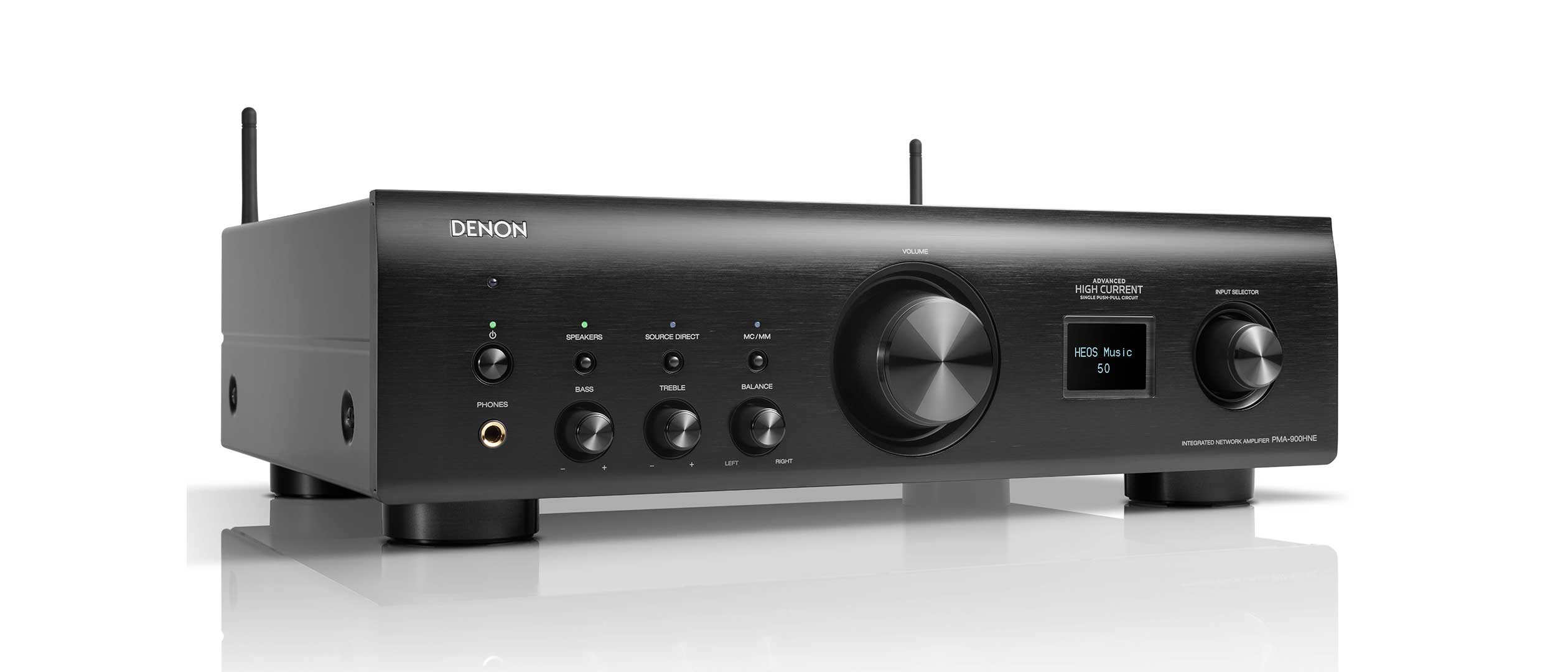Sound+Image Verdict
You can just add speakers, or plug up a load of sources. Denon’s hi-fi division makes its first move on the smart amplifier market, adding the HEOS streaming platform to a traditional-looking hi-fi integrated amp. It’s a successful formula.
Pros
- +
Solid hi-fi amp at its heart
- +
HEOS module adds streaming & multiroom
- +
App control & networking
Cons
- -
Tiny front display
- -
Tapered knobs
- -
Bluetooth is SBC only
Why you can trust What Hi-Fi?
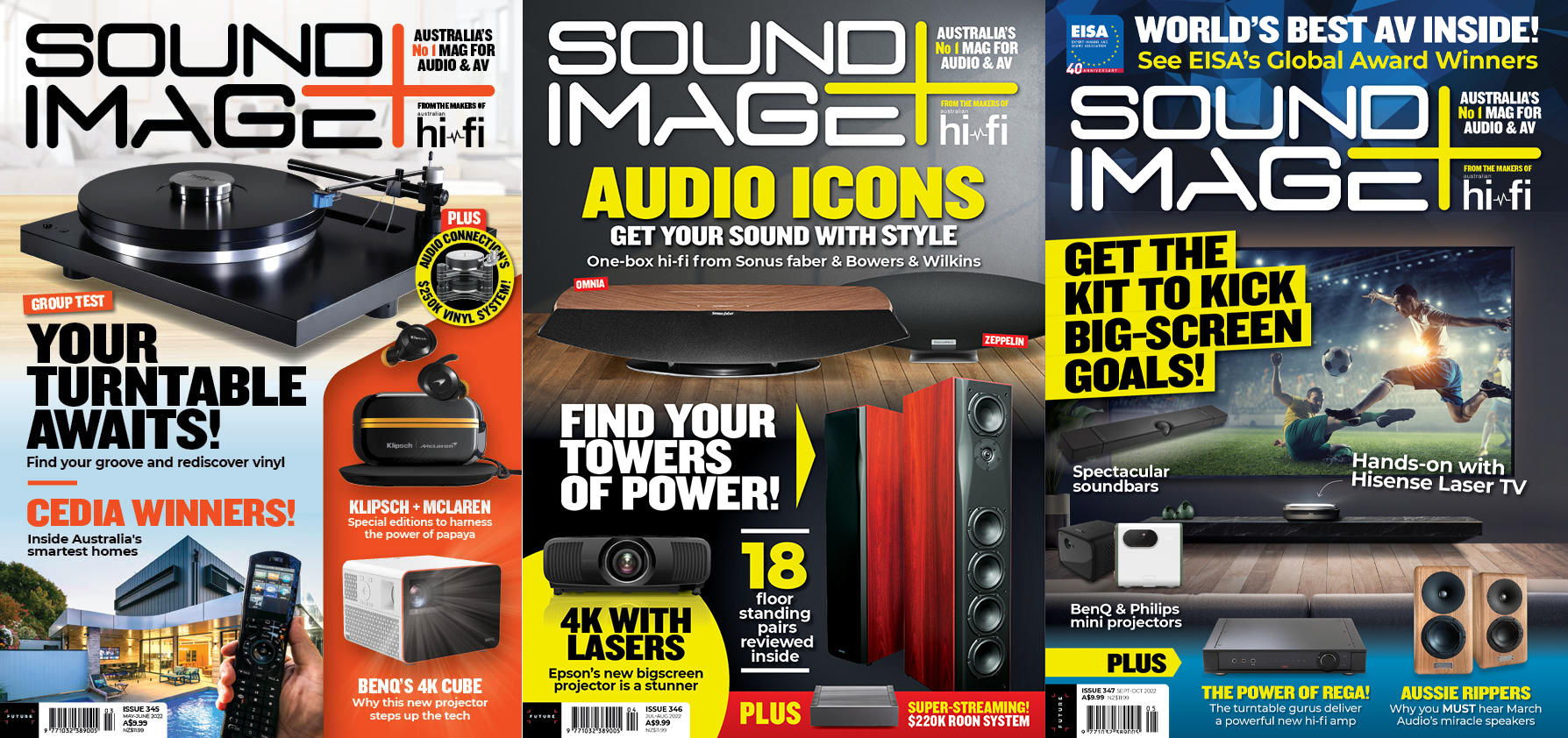
This review originally appeared in Sound+Image magazine, Australian sister publication to What Hi-Fi?. Click here for more information on Sound+Image, including digital editions and details on how you can subscribe.
The smart stuff in Denon’s amplifier here comes primarily from the inclusion of the HEOS wireless and multiroom streaming platform, which was one of the first to appear, along with Bluesound, as part of the post-Sonos streaming revolution.
The HEOS platform is no surprise – it has appeared in a good many previous Denon and Marantz products, as well as those which were initially branded to HEOS itself.
The surprise here, then, is that Denon is saying that this is the first time HEOS has been incorporated into something it considers to be a ‘pure hi-fi amplifier. So Denon’s goal for the PMA-900HNE is clearly defined – it’s an upper mid-range hi-fi integrated amplifier that is network connected, streaming as easily as it plays from conventional sources.
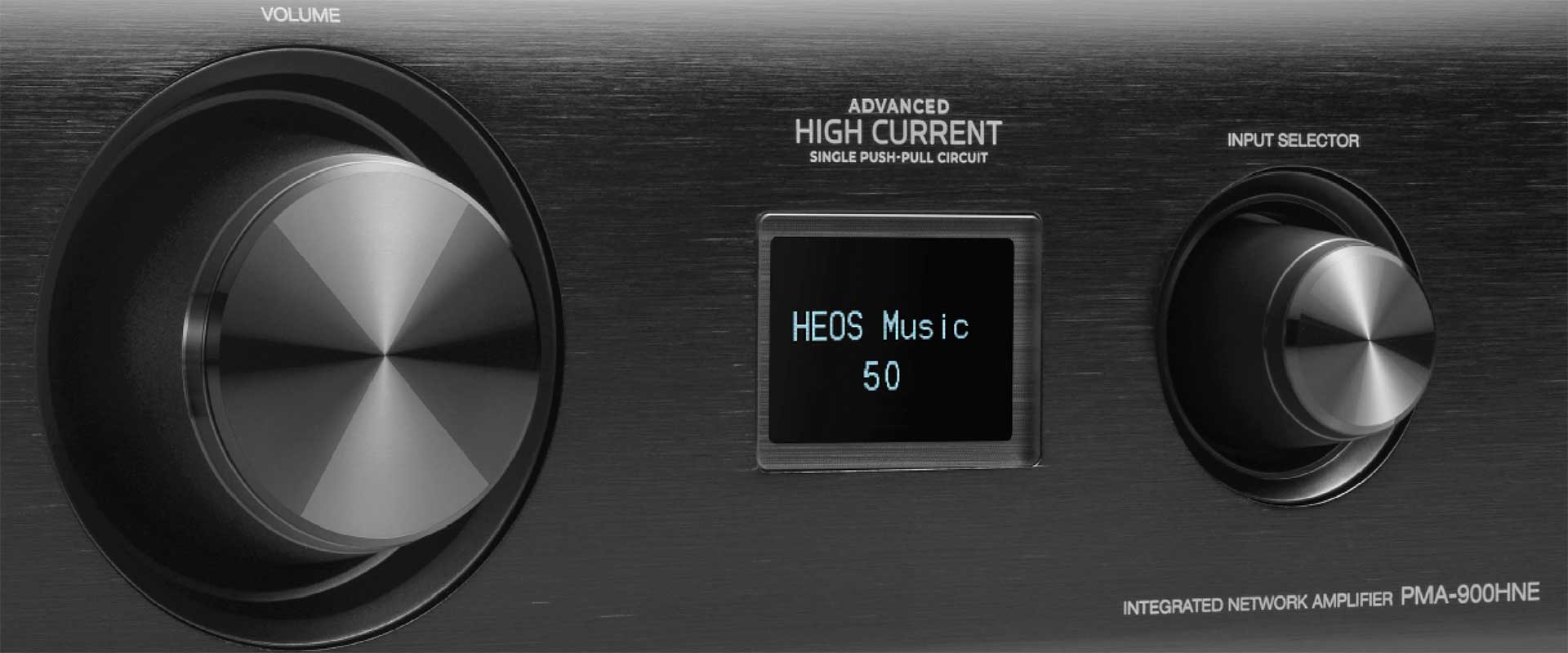
Denon's 900 Series
That differentiation of ‘pure hi-fi’ is an interesting one, and an important stepping-off point for the design of the PMA-900HNE.
This 900 Series ranks right in the middle of Denon’s hi-fi solutions, below the range-topping premium PMA-A110 introduced to mark Denon’s recent 110th anniversary, and below the PMA-1700NE.
Both those higher amplifiers have (or will have) a matching level of CD player available – both of them SACD players indeed, in the DVD-A110 and the DCD-1600NW. (“We appreciate the CD format and will always continue to support it,” said Denon's team during a recent presentation to EISA editors.)
The 900 Series also has an associated CD player, the DCD-900NE, which is less substantial than the higher models and not compatible with SACD discs, but which has a USB-A slot from which it can play FLAC up to 24-bit/192kHz or DSD to 5.6 MHz.
The latest hi-fi, home cinema and tech news, reviews, buying advice and deals, direct to your inbox.
The 900 Series CD player also features Denon’s Alpha processing in its 32-bit Advanced AL32 Processing form. Denon’s Alpha processing operates during the digital-to-analogue conversion, and to smooth the final analogue waveform beyond the ‘steps’ of a digitally-derived waveform into something more truly analogue.
The amplifiers below the 900 Series in Denon’s hi-fi range are the PMA-600NE, with a headline 45W power per channel into 8 ohms (20Hz-20kHz, T.H.D. 0.07 per cent) compared to this 900 Series’ 50W, but no HEOS.
There’s also the older DRA-800H, worth mentioning, as on paper it appears impressive for its price of £599 / $699 / AU$1449, offering 100W into 8 ohms (20Hz-20kHz, T.H.D. 0.08 per cent) and also having HEOS inside, while its inputs extend to HDMI switching, with no fewer than five HDMI inputs. At least a single HDMI ARC input for playing from a TV does seem a directional trend for modern stereo amplifiers, and we did ask during Denon’s presentation to EISA why this new PMA-900HNE doesn’t have one.
Denon’s answer was doubly revealing: firstly the DRA-800H is not a pure hi-fi product, they said; it is derived from Denon’s AV platforms (as its appearance also suggests) and it includes compromises on its amplification and its power supply quality.
As for why there’s no HDMI ARC on this new model, it’s simply the cost of licensing, we were told – including it would add an estimated €200 to €300 (approx £230 / $250 / AU$450) to the final retail price.
So having established the ‘pure hi-fi’ credentials of the PMA-900HNE amplifier, what does it offer?
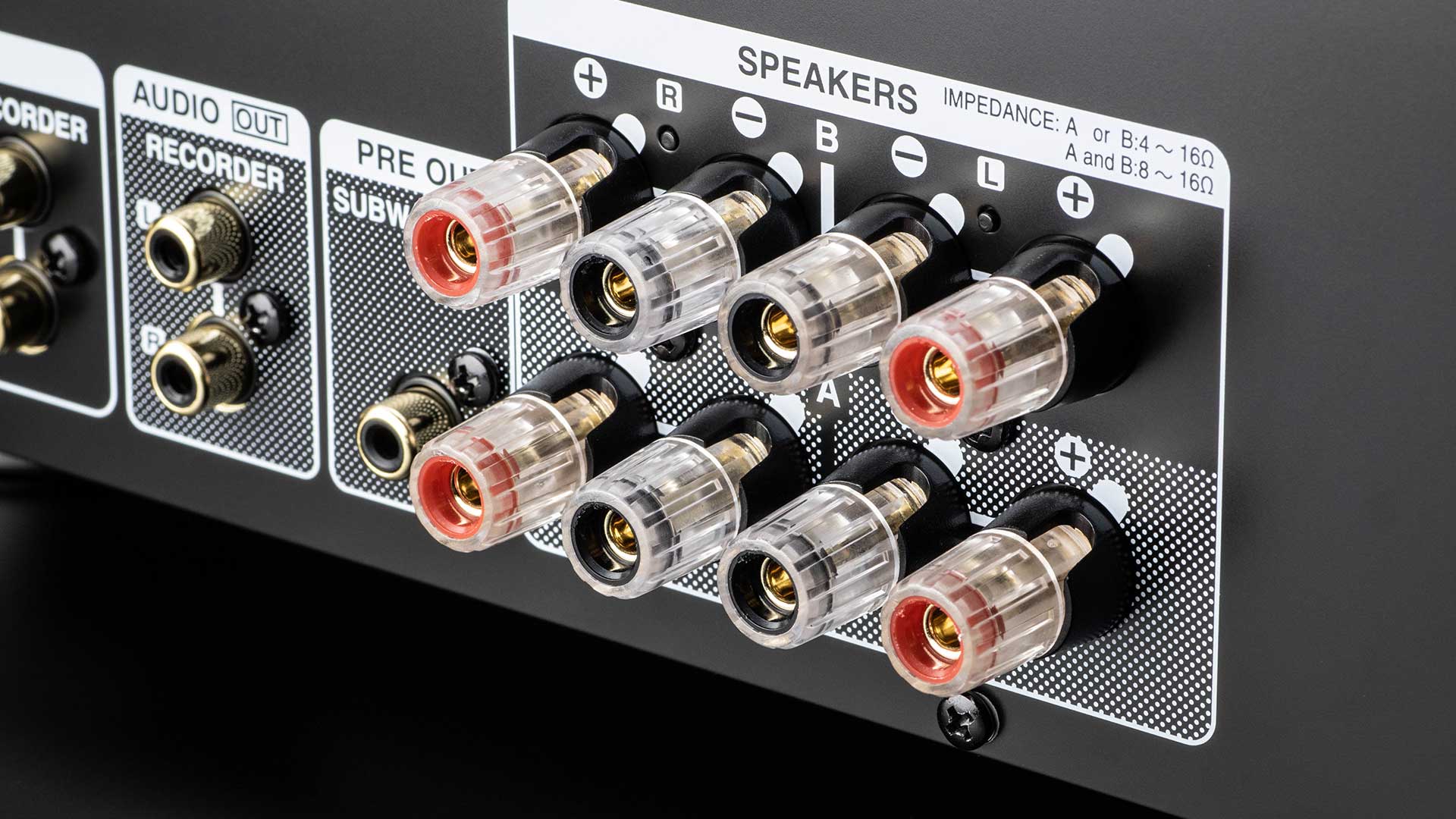
Build & facilities
Out of the carton, the 900HNE certainly feels solid and substantial; its ventilated top is a durable plastic with embossed lines for strength, but all other sides are metal. The bottom section is shaped for improved rigidity and the sturdy front panel is made of aluminium.
Everything is good and solid around the back, with sturdy sockets and speaker terminals, while the front is traditional hi-fi rather than anything 21st century. There’s a very small text display restricted to a square “low-noise OLED display” that is all of 4cm across. This looks a bit last century compared with the large colour displays of some streaming amplifiers, and we have to wonder if this is to allow design convergence with sister brand Marantz, given that the same small display might also fit neatly within the Marantz signature ‘porthole’ circle.
Still, it does its job indicating the current volume, controlled by the big left knob, and source selection, made using the smaller right knob, which is continuously tapered so that we found it relatively hard to grasp, also requiring a firm but pleasing turn to clunk it through its various input selections.
There are two sets of speaker outputs (note that ‘Speakers A’ is unusually the bottom set of the two), and these can be used for bi-wiring if you select ‘Speakers A+B’ from the front-panel switch. The rear panel also offers fixed line-level ‘Record outs’ and a single variable subwoofer output filtered at 150Hz. The subwoofer output operates only in conjunction with ‘Speakers A’; it is turned off when you select ‘Speakers B’.

The PMA-900HNE is fairly well provisioned for physical inputs, even without any HDMI. There are three line-level analogue inputs plus a phono input for a turntable with an internal phono stage which is switchable between moving-magnet and moving-coil, using the press button on the front panel. There are a generous three optical digital inputs and one coaxial digital input, plus a USB-A slot which can play from sticks and drives, handling MP3, AAC and WMA, plus FLAC, WAV and Apple Lossless to 24-bit/192kHz, or DSD to 5.6MHz. Note there is no USB-B socket here to allow direct playback from a computer.
There are two little screw-in antennas which allow both Bluetooth and Wi-Fi connection, but there’s also an Ethernet socket on the rear panel if you’re able to give it the benefits of a wired network connection.
The Bluetooth spec is SBC only and doesn’t include aptX, not even stretching to AAC, so Apple users will be best to use the included AirPlay 2 for direct streaming, while Android users should head straight to the HEOS app.
HEOS streaming & multiroom
Once networked the whole HEOS offering becomes available, with app-controlled access to streaming services. For paid services HEOS links directly to Spotify (free and paid), Amazon Music, Deezer and Tidal, plus free services TuneIn and iHeart internet radio, and also SoundCloud. (We should note and applaud that the HEOS app is properly regionalised for Australia, so we don’t see services like Pandora and XM Music which HEOS may support in other markets but which aren’t available here. Some rival platforms don’t do this; HEOS is perhaps advantaged in this by much of its software development taking place in Sydney.)
Other services, of course, can be sent point-to-point from a smart device using AirPlay 2 or Bluetooth, though bear in mind the very limited quality of the latter. The AirPlay 2 would also allow Roon to stream to the Denon, which has been labelled as ‘Roon Tested’.
There’s also DLNA network streaming available in HEOS, selected under the ‘Music Server’ tab, though you may need to enter paths to your music to get that working, which can be a little longwinded.
Finally, there’s voice control available, up to a point and with varying degrees of utility, from Amazon Alexa, Google Assistant or, via your iPhone, Siri.
- Everything you need to know about Spotify HiFi
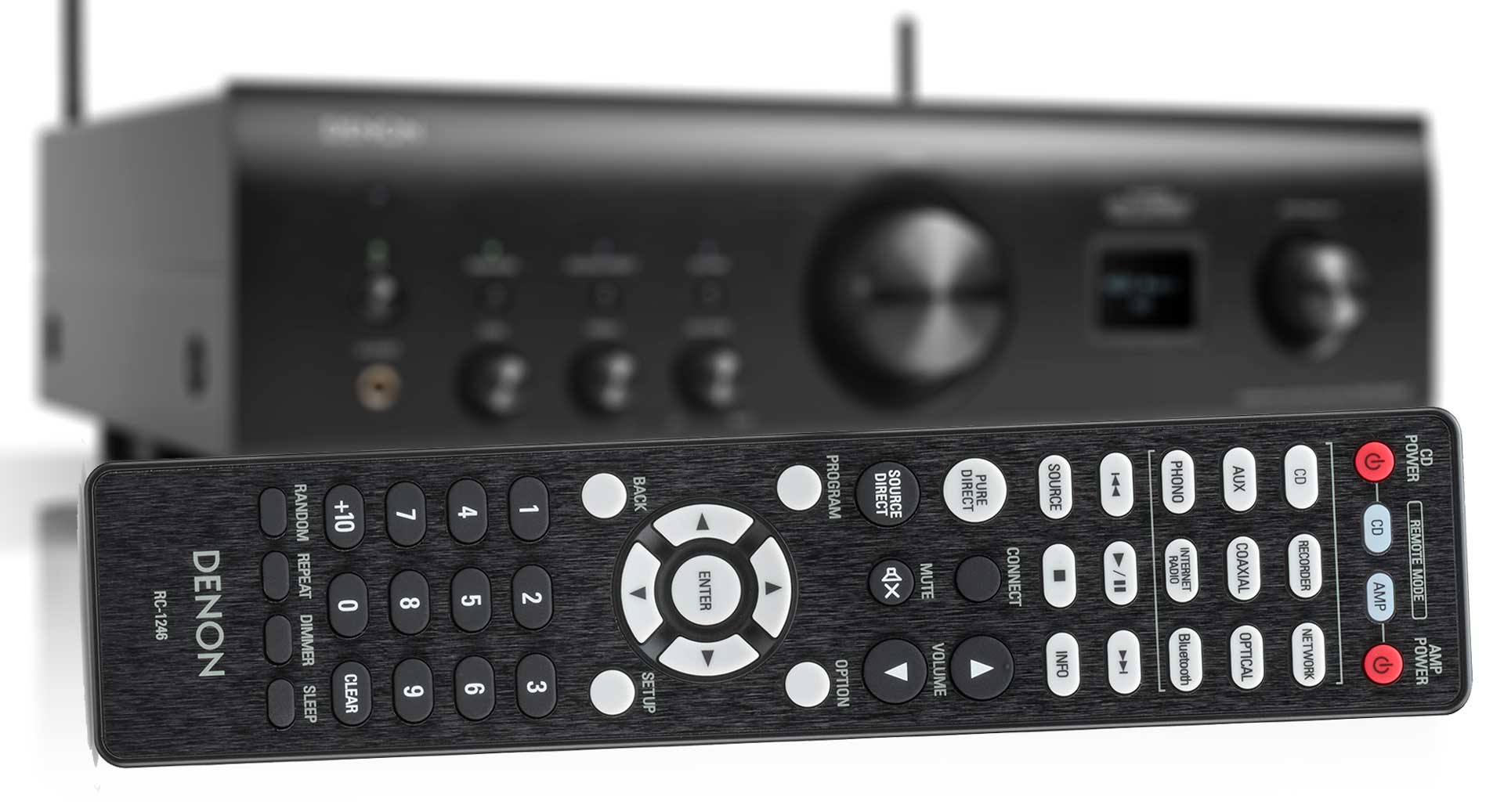
Setting up

Power: 2 x 50W into 8 ohms (20Hz-20kHz, THD 0.07%)
Inputs: 3 x RCA line-level analogue, 1 x RCA phono mc/mm, 3 x optical digital, 1 x coaxial optical, USB-A, Ethernet, Wi-Fi, Bluetooth, HEOS
Outputs: 2 x speaker outs, record out, subwoofer preout (mono), headphone out
Dimensions: 434 x131 x 376mm
Weight: 8.3kg
We had no problems setting up the PMA-900HNE; only those twin speaker outputs confused us, as we connected to ‘Speakers B’ initially and wondered why we could only hear the subwoofer mumbling away to itself. That corrected, we gave the amp an Ethernet cable and turned to the HEOS app; once signed in the amp was quickly ‘discovered’ and able to be controlled from the app, including source selection, music selection and volume.
There is, however, a full-size remote control, as every product requiring volume control should have (too many these days leave you with only app control!). This is nicely laid out, the volume and mute buttons clear, and with buttons for direct access to each input, so you don’t need to clunk away on that second knob.
The only possible confusion is that some buttons don’t control the amp at all: for example, there is a ‘Source Direct’ button which clarifies the sound by removing unnecessary processing, but there is also a ‘Pure Direct’ remote key which we thought might be even better, but which didn’t do anything. The web manual explains this is a function for the matching CD player only, as are other buttons, including transport controls and dual power keys. So this is a 900 Series system remote, ready to run the CD player too, should you invest in that legacy format.
You can fashion your own little ‘Source Direct’ action by individually turning off functions you don’t use if you feel they might add noise to the system. We were using Ethernet networking, so we could turn off the Wi-Fi altogether. After trying Bluetooth, we turned that off too. You can turn off networking and USB-A operation if you’re not using them, but we were, so we didn’t.
You can adjust some settings through the menus in the HEOS app, but not, it seemed, all of them. For turning off those bits, you’ll need to use the tiny front panel display, as you will in order to adjust auto-standby, which was one of our first stops, as it seemed the amp was turning off every time we left the room. Do check HEOS menus as well though (‘settings’ appears only on the HEOS home screen, then go to ‘My Devices’/PMA-900HNE). The amp came to us with its EQ maxed up on both treble and bass, so we re-centred those.
There is a ‘Quality’ option which was set to ‘Normal’ so we changed it to ‘High’, though we later found this affects only the signal shared from this HEOS module to other HEOS speakers around the home. (During this test we didn’t have any other HEOS in the home, so didn’t experience the multiroom sharing abilities of this amplifier – a significant bonus if that’s what you’re planning.)
Another bonus we came across in the HEOS menus – the PMA-900HNE can learn IR controls from any old remote you have lying around, at least for volume up/down and power toggling. Not only is this handy should you ever lose or break your remote control, but it also allows you to teach the Denon amp your TV remote commands, which may allow easier control for TV sound through one of those optical inputs (one of which is labelled ‘TV’, and has input sensing so it should come on automatically when receiving a signal). On the other hand, using a TV remote may simultaneously control your TV speakers or leave you in power toggle desynchronisation, which can be more annoying than not doing this in the first place. But the option is there.

Sound performance
All set up, we just started playing music, initially digitally, from our music computer, via a high-quality DAC into one of the analogue inputs.
The sound instantly revealed that crucial differentiation which Denon made between its AV platform level of sound and the sound of one of its ‘pure hi-fi’ products. Through our reference speakers it opened wide a classic mix like The Temptations’ Just My Imagination, each track clear in its panning, with several interweaving string parts, lead and harmony vocals, harp and drums kept hard left, and the combination of it all dripping with smooth musicality.
One extraordinary bit of soundstaging came when playing a live Michelle Shocked track from the bonus disc with the 2003 re-release of ‘Short Sharp Shocked’. This is a camp-fire recording that sounds like a simple two-channel recording, and it blows out with plosive pops every now and then, but what impressed us when we listened through the Denon was the soundfield created from the atmosphere and audience around her, so wide and deep that we almost huddled ourselves closer towards the fire pit.
It even managed to cut through the dense layers of Alex The Astronaut’s Haircut to fully follow the climbing curve to its cathartic chorus, and it made bouncy and well-separated fun of the bubbly electronica through her watery single Octopus.
The amp’s ability to entertain can be judged by us losing well over an hour of productive review time when our Apple Music subscription led us to a series of Wet Leg videos. Their track Chaise Longue also gave more than an inkling of the high-quality power here; this is no streamer running a token power circuit. Even with the track up and cranking, the gear shift to the chorus was all growth, no compression.
Given the shots and cracks of Jim Keltner’s track on ‘The Sheffield Drum & Track Disc’, there was no doubting the Denon’s ability to let forth a crack-whip of intense power at full transient speed and with an impressive weight.
Even a recording like John Lennon’s (Just Like) Starting Over, which can emerge thinly from less discerning equipment, here was given a real solidity of thwack to the kick drum of Andy Newmark, amid a sound mix that was accurately delivered as lean, but never mean.
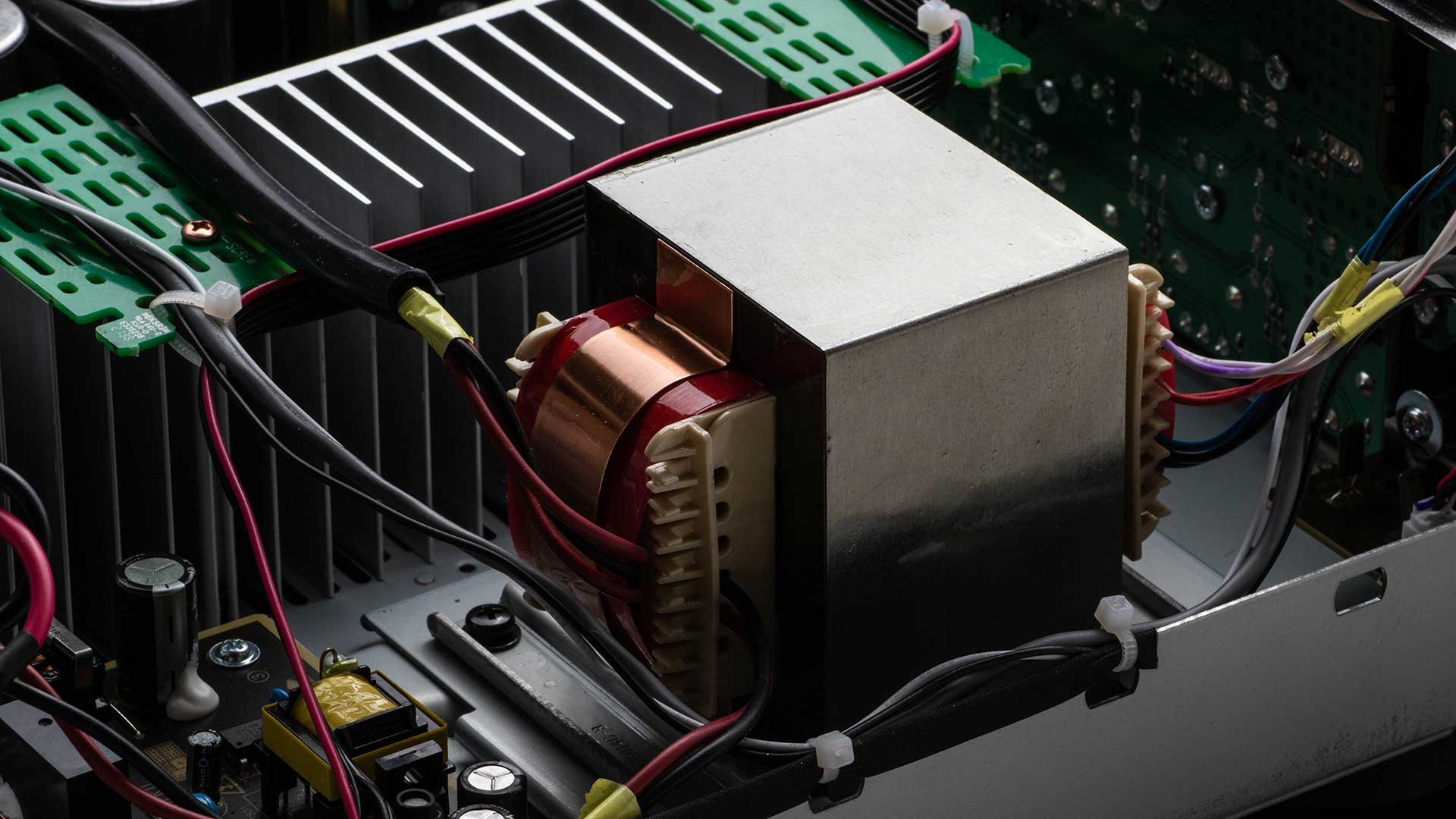
For what do we thank this strong hi-fi performance? Some solid hi-fi engineering, we think. The PMA-900HNE may not get the full suite of Denon technologies, given its midranking position, but it gets a good lot.
It has a high-current main transformer on a 1.6mm-thick metal base, with separate windings for audio and control circuits, and customised block capacitors including an ‘Elna For Audio’ main capacitor.
The overall design takes the top-down approach from the flagship PMA-A110 along with selected audio components from the PMA-1700NE, including electrical volume and tone controls which allow shorter signal paths – the whole construction is also divided by signal-level – to help achieve up to 7dB better signal-to-noise up to the preamp gain control and into the AHC (advanced high current) transistors which Denon says handle two to three times the electrical current capacity of conventional audio power transistors. Denon uses these in a single push-pull circuit; it doesn’t use the MOS power transistors of the higher-level amps. But it does have a solid extruded aluminium heatsink for cooling.
The digital section, meanwhile, is extensively shielded and uses Denon’s DAC Master Clock design and an ESS 9018K2M DAC (replacing a TI PCM1795 because of parts shortages) with that AL32 processing to smooth the way.
All this supports the HEOS sources available here, as the HEOS module delivers a digital output which can benefit from the superior digital and analogue circuits here compared with, say, a lesser HEOS unit.
Open the HEOS app and choose a service, or just open Spotify if you prefer, and select the Denon as the ‘speaker’. We were doing this with Paul Simon’s You Can Call Me Al, thinking it sounded good enough for a free Spotify stream, but realised we could improve the file quality by streaming from Apple Music losslessly and throwing it to the Denon via AirPlay. This sound was far more solid, bright and expansive in every way. It’s worth considering the different paths you may have to playback and picking the optimum one to enjoy the best possible quality. With its combination of services, internet radio and network file playback, HEOS offers no shortage of options, and most people will be able to carry on using whatever source and apps they currently prefer, simply using the Denon as the output, instead of headphones.
We closed with a listen to the phono stage, or more accurately to the music which the Denon sent through, whether the smooth sound of Miles Davis bringing in the melody of Autumn Flowers to ground the expansive version on Cannonball Adderley’s ‘Somethin’ Else’, or the rocky prog of the late Vangelis under side two of Aphrodite’s Child’s legendary ‘666’ on Dean-labelled Vertigo vinyl, where wide-panned drums spanned some fizzy bass synth on Aegian Sea and the subsequent Seven Bowls rather freaked us out.
We could select Source Direct for the phono input (and doing so nicely sharpened the timing and clarified the edges of the frenetic piano on The Marching Beast); in this mode the tone controls become inaccessible, but we really don’t think you’ll be needing them.

Verdict
This Denon smart amp makes an interesting comparison with other approaches. It’s clearly more traditional hi-fi than a product like the Bluesound Powernode, and with more traditional inputs so that those of the older school may find it easier to use. NAD’s smart amplifiers – the C 700 for example – take a different approach again, putting the smart stuff at the front with an amp behind it. Denon, however, has taken its hi-fi amplifier expertise and added streaming to the front of it – and that might be the better way to ensure sound quality at the heart of your hi-fi.
Another comparison can be made with Denon’s stablemate Marantz, which has recently released the Model 40n, a more expensive smart amplifier with more power reserves to draw on, and a prettier design perhaps, though otherwise doing pretty much the same thing. For all but difficult speaker loads and the biggest dynamics, the Denon PMA-900HNE goes a long way towards that amp’s performance – and at a fraction of its price.
- Check out all the Australian reviews from Sound+Image & Australian Hi-Fi magazines

Jez is the Editor of Sound+Image magazine, having inhabited that role since 2006, more or less a lustrum after departing his UK homeland to adopt an additional nationality under the more favourable climes and skies of Australia. Prior to his desertion he was Editor of the UK's Stuff magazine, and before that Editor of What Hi-Fi? magazine, and before that of the erstwhile Audiophile magazine and of Electronics Today International. He makes music as well as enjoying it, is alarmingly wedded to the notion that Led Zeppelin remains the highest point of rock'n'roll yet attained, though remains willing to assess modern pretenders. He lives in a modest shack on Sydney's Northern Beaches with his Canadian wife Deanna, a rescue greyhound called Jewels, and an assortment of changing wildlife under care. If you're seeking his articles by clicking this profile, you'll see far more of them by switching to the Australian version of WHF.
